What Are The Bright Spots On Ceres?
What Are the Bright Spots on Ceres?

Dwarf planet Ceres has more than 130 bright areas, and most of them are associated with impact craters. Now, Ceres has revealed some of its well-kept secrets in two new studies in the journal Nature, thanks to data from our Dawn spacecraft.
Two studies have been looking into the mystery behind these bright areas. One study identifies this bright material as a kind of salt, while the other study suggests the detection of ammonia-rich clays.
Study authors write that the bright material is consistent with a type of magnesium sulfate called hexahydrite. A different type of magnesium sulfate is familiar on Earth as Epsom salt.

Researchers, using images from Dawn’s framing camera, suggest that these salt-rich areas were left behind when water-ice sublimated in the past. Impacts from asteroids would have unearthed the mixture of ice and salt.
An image of Occator Crater (below) shows the brightest material on Ceres. Occator itself is 60 miles in diameter, and its central pit, covered by this bright material, measures about 6 miles wide. With its sharp rim and walls, it appears to be among the youngest features on the dwarf planet.

In the second nature study, members of the Dawn science team examined the composition of Ceres and found evidence for ammonia-rich clays. Why is this important?
Well, ammonia ice by itself would evaporate on Ceres today, because it is too warm. However, ammonia molecules could be stable if present in combination with other minerals. This raises the possibility that Ceres did not originate in the main asteroid belt between Mars and Jupiter, where it currently resides. But instead, might have formed in the outer solar system! Another idea is that Ceres formed close to its present position, incorporating materials that drifted in from the outer solar system, near the orbit of Neptune, where nitrogen ices are thermally stable.

As of this week, our Dawn spacecraft has reached its final orbital altitude at Ceres (about 240 miles from the surface). In mid-December, it will begin taking observations from this orbit, so be sure to check back for details!
ake sure to follow us on Tumblr for your regular dose of space: http://nasa.tumblr.com
More Posts from Intergalacticnerd and Others

A photo of Jupiter. Took by Voyager with VGISS on February 01, 1979 at 23:13:23. Detail page on OPUS database.

Astronauts play ping pong in space using water and hydrophobic padels
[video]
Solar System: Things to Know This Week
Here are a few things you should know about our solar system this week:
1. Gearing Up for a Grand Finale

There’s just a year left until the Cassini mission begins its Grand Finale – the final phase of its mission, during which the spacecraft will dive repeatedly between the planet and the rings. To get ready, the Cassini team has launched an enhanced, mobile device-friendly version of the mission website. The site includes information about Cassini, Saturn, the moons and the rings – but it also tells the human stories behind one of the most ambitions expeditions of all time.
2.Caught in Transit

On Monday, May 9, the planet Mercury will cross directly in front of the sun, an event that hasn’t occurred since 2006 and won’t happen again until 2019. Find out how to watch HERE.
3. A Moon for Makemake

Our Hubble Space Telescope has spotted a small, dark moon orbiting Makemake (pronounced “MAH-kay MAH-kay). Make make is the second brightest icy dwarf planet – after Pluto – in the faraway Kuiper Belt.
4. The Age of the Aquarids

The Eta Aquarid meteor shower is the first of two showers that occur each year as a result of Earth passing through dust released by Halley’s Comet. This year, it should peak on the night of May 5/6. Get tips for watching HERE.
5. The Southern Lights of Saturn

On May 4, Cassini will reach periapse, the closest point to Saturn in the spacecraft’s orbit. At about this time, Cassini’s cameras will monitor Saturn’s south polar aurorae, and also image the bright limb of the planet to better understand its upper haze layers.
Want to learn more? Read our full list of the 10 things to know this week about the solar system HERE.
Make sure to follow us on Tumblr for your regular dose of space: http://nasa.tumblr.com
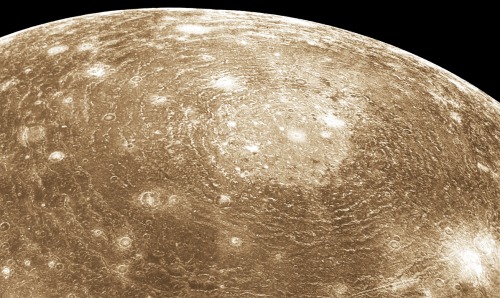
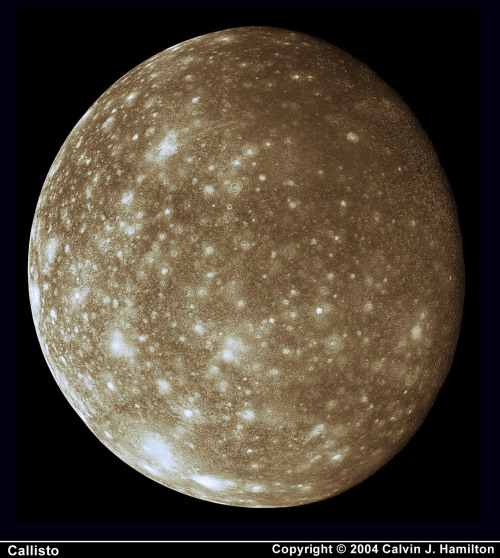
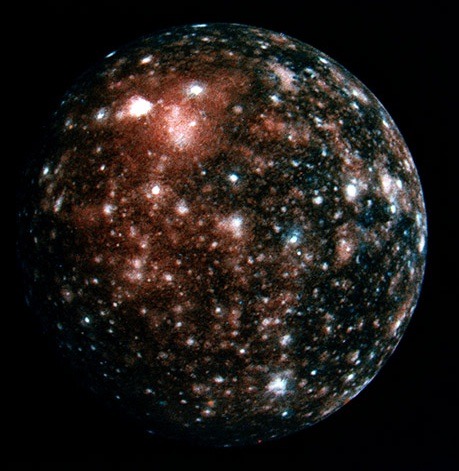

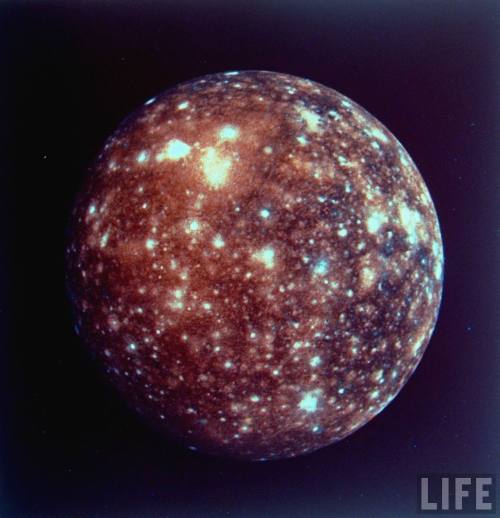
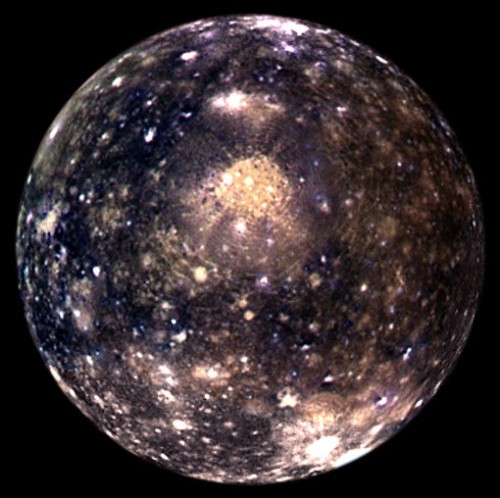

Jupiter’s moon, Callisto.


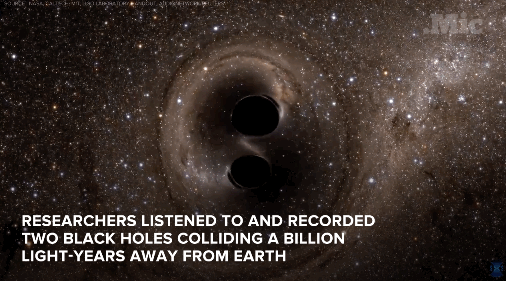




Gravitational waves are real — and that’s a huge f***ing deal!
A century ago, Albert Einstein theorized there was such a thing as a fabric of space and time — that the universe was malleable, and that large objects and events would cause it to bend.
He was right. From studying the signals emanating from the merging of two black holes — have separate masses equal to 36 and 29 suns — scientists with the Laser Interferometer Gravitational-Wave Observatory were able to observe gravitational waves. Their measurements matched expectations of what Einstein predicted in his General Theory of Relativity.
Follow @the-future-now


This is Kjell Lindgren. He’s a NASA astronaut who just got back from 5 months on the International Space Station. There are two reasons why this picture is hilarious:
His wife is flawless and makes bad space puns to make him do household chores.
I have that shirt. Thousands of people have that shirt. That shirt is available at Target. Which means actual astronaut Kjell Lindgren, with his wardrobe already full of NASA-issued and logo-emblazoned clothes, was at Target, saw a NASA shirt, and was like, “Yes, I am buying this because this is what I want to spend my actual astronaut salary on.”
tl;dr NASA employs a bunch of fucking nerds
Views of Pluto
10 Images to Celebrate the Historic Exploration of the Pluto System
One year ago, our New Horizons mission made history by exploring Pluto and its moons – giving humankind our first close-up look at this fascinating world on the frontier of our solar system.

Since those amazing days in July 2015, the New Horizons spacecraft has transmitted numerous images and many other kinds of data home for scientists and the public alike to study, analyze, and just plain love. From Pluto’s iconic “heart” and sweeping ice-mountain vistas to its flowing glaciers and dramatic blue skies, it’s hard to pick just one favorite picture. So the mission team has picked 10 – and in no special order, placed them here.
Click the titles for more information about each image. You’ve seen nine of them before, and the team added a 10th favorite, also sure to become one of New Horizons’ “greatest hits.”
Vast Glacial Flows

In the northern region of Pluto’s Sputnik Planum, swirl-shaped patterns of light and dark suggest that a surface layer of exotic ices has flowed around obstacles and into depressions, much like glaciers on Earth.
Jagged Ice Shorelines and Snowy Pits

This dramatic image from our New Horizons spacecraft shows the dark, rugged highlands known as Krun Macula (lower right), which border a section of Pluto’s icy plains.
Blue Skies

Pluto’s haze layer shows its blue color in this picture taken by the New Horizons Ralph/Multispectral Visible Imaging Camera (MVIC). The high-altitude haze is thought to be similar in nature to that seen at Saturn’s moon Titan.
Charon Becomes a Real World

At half the diameter of Pluto, Charon is the largest satellite relative to its planet in the solar system. Many New Horizons scientists expected Charon to be a monotonous, crater-battered world; instead, they’re finding a landscape covered with mountains, canyons, landslides, surface-color variations and more.
The Vistas of Pluto

Our New Horizons spacecraft looked back toward the sun and captured this near-sunset view of the rugged, icy mountains and flat ice plains extending to Pluto’s horizon. The backlighting highlights over a dozen layers of haze in Pluto’s tenuous but distended atmosphere.
The Dynamic Duo: Pluto and Charon in Enhanced Color

The color and brightness of both Pluto and Charon have been processed identically to allow direct comparison of their surface properties, and to highlight the similarity between Charon’s polar red terrain and Pluto’s equatorial red terrain. Pluto and Charon are shown with approximately correct relative sizes, but their true separation is not to scale.
Strange Snakeskin Terrain

A moment’s study reveals surface features that appear to be texturally ‘snakeskin’-like, owing to their north-south oriented scaly raised relief. A digital elevation model created by the New Horizons’ geology shows that these bladed structures have typical relief of about 550 yards (500 meters). Their relative spacing of about 3-5 kilometers makes them some of the steepest features seen on Pluto.
Pluto’s Heart

This view is dominated by the large, bright feature informally named the “heart,” which measures approximately 1,000 miles (1,600 kilometers) across. The heart borders darker equatorial terrains, and the mottled terrain to its east (right) are complex. However, even at this resolution, much of the heart’s interior appears remarkably featureless—possibly a sign of ongoing geologic processes.
Far Away Snow-Capped Mountains

One of Pluto’s most identifiable features, Cthulhu (pronounced kuh-THU-lu) stretches nearly halfway around Pluto’s equator, starting from the west of the great nitrogen ice plains known as Sputnik Planum. Measuring approximately 1,850 miles (3,000 kilometers) long and 450 miles (750 kilometers) wide, Cthulhu is a bit larger than the state of Alaska.
Colorful Composition Maps of Pluto

The powerful instruments on New Horizons not only gave scientists insight on what Pluto looked like, their data also confirmed (or, in many cases, dispelled) their ideas of what Pluto was made of. These compositional maps – assembled using data from the Linear Etalon Imaging Spectral Array (LEISA) component of the Ralph instrument – indicate the regions rich in ices of methane (CH4), nitrogen (N2) and carbon monoxide (CO), and, of course, water ice (H2O).
Make sure to follow us on Tumblr for your regular dose of space: http://nasa.tumblr.com



We’ve always defined ourselves by the ability to overcome the impossible. And we count these moments. These moments when we dare to aim higher, to break barriers, to reach for the stars, to make the unknown known. We count these moments as our proudest achievements. But we lost all that. Or perhaps we’ve just forgotten that we are still pioneers. And we’ve barely begun. And that our greatest accomplishments cannot be behind us, because our destiny lies above us. - Interstellar, 2014.

NASA just released the most detailed photo of space ever taken
The picture of the Andromeda galaxy, the nearest spiral galaxy to our own, is comprised of a mind-boggling 1.5 billion pixels and was snapped from 2.5 million light years away by the powerful Hubble Space Telescope.
See it in all its glory
-
 leda-timeandspace liked this · 1 year ago
leda-timeandspace liked this · 1 year ago -
 raineszramski liked this · 7 years ago
raineszramski liked this · 7 years ago -
 blue-sun-king liked this · 8 years ago
blue-sun-king liked this · 8 years ago -
 flyingblueh reblogged this · 8 years ago
flyingblueh reblogged this · 8 years ago -
 tristanshoard reblogged this · 8 years ago
tristanshoard reblogged this · 8 years ago -
 69orca liked this · 8 years ago
69orca liked this · 8 years ago -
 aphelionluna-blog liked this · 8 years ago
aphelionluna-blog liked this · 8 years ago -
 blog-generouscollectornightmare liked this · 8 years ago
blog-generouscollectornightmare liked this · 8 years ago -
 lost-locket liked this · 8 years ago
lost-locket liked this · 8 years ago -
 heavy-breathing-meme liked this · 8 years ago
heavy-breathing-meme liked this · 8 years ago -
 blood-b0y liked this · 9 years ago
blood-b0y liked this · 9 years ago -
 yellowgrowngreen liked this · 9 years ago
yellowgrowngreen liked this · 9 years ago -
 myrangerover-love-blog reblogged this · 9 years ago
myrangerover-love-blog reblogged this · 9 years ago -
 yakmanistan reblogged this · 9 years ago
yakmanistan reblogged this · 9 years ago -
 looje22 liked this · 9 years ago
looje22 liked this · 9 years ago -
 tyrannosrex reblogged this · 9 years ago
tyrannosrex reblogged this · 9 years ago -
 unlikelyfairytale reblogged this · 9 years ago
unlikelyfairytale reblogged this · 9 years ago -
 glitchtechscience reblogged this · 9 years ago
glitchtechscience reblogged this · 9 years ago -
 allofusdust liked this · 9 years ago
allofusdust liked this · 9 years ago -
 thanksforthedinosaur reblogged this · 9 years ago
thanksforthedinosaur reblogged this · 9 years ago -
 dragoni liked this · 9 years ago
dragoni liked this · 9 years ago -
 marsalexandra reblogged this · 9 years ago
marsalexandra reblogged this · 9 years ago -
 randomcause liked this · 9 years ago
randomcause liked this · 9 years ago -
 lethalexa reblogged this · 9 years ago
lethalexa reblogged this · 9 years ago
"Astronomy compels the soul to look upwards and leads us from this world to another." - Plato
147 posts
